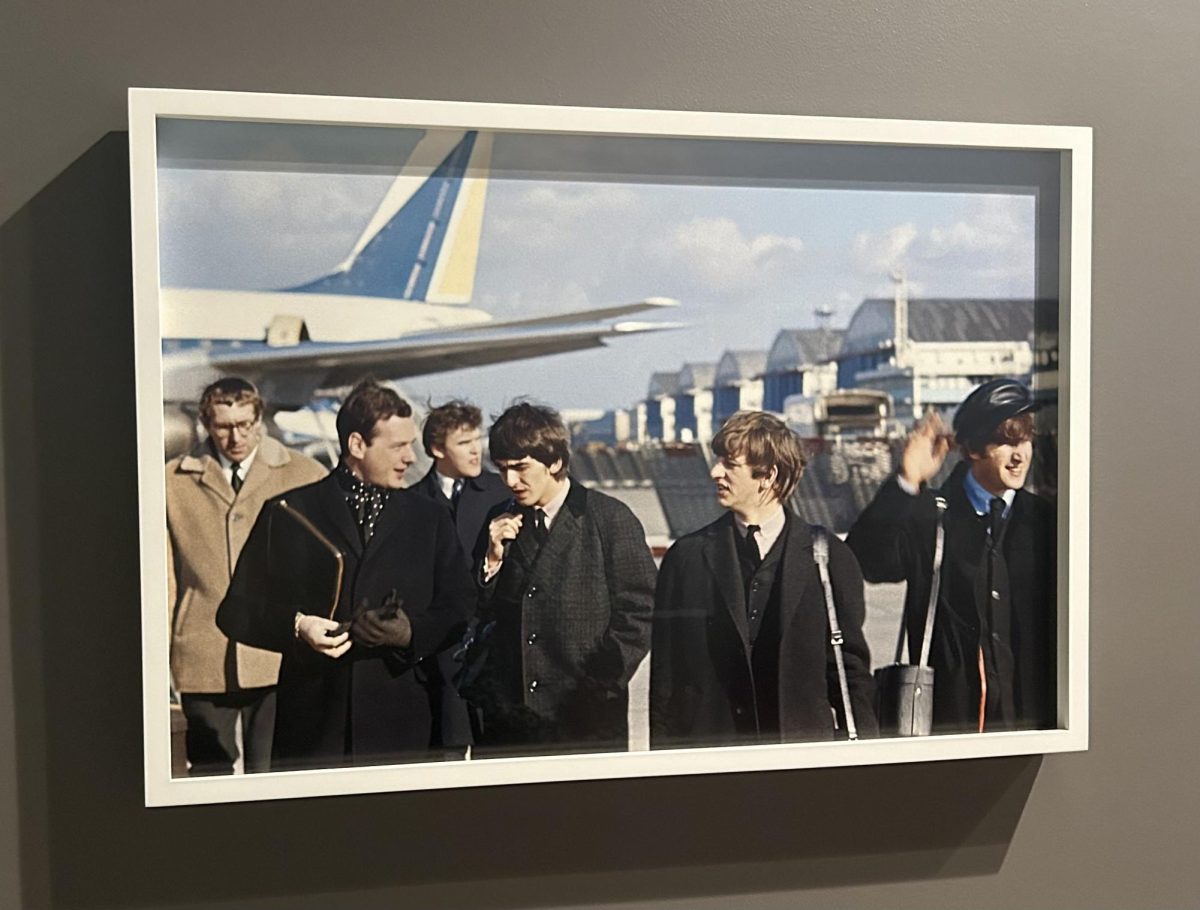To Beatlemaniacs, 1964 was the year that pop culture forever transformed. As John, Paul, George, and Ringo rose to fame, the world’s perception of British bands being stuffy and outdated quickly shifted. The Beatles were fun and with-it, their surprising, ebullient compositions sounded fresh and invigorating to young ears. The young men, all in their early twenties at the time, brought a subsequent culture to what it meant to be a fan of pop music. Yet to the four bandmates, it was an innocent time — one of novice success and eager anticipation of the future.
We all know what Beatlemania looked and sounded like from the outside, but what was it like for the four men at the center of that storm?
The newly published book, 1964: Eyes of the Storm, is probably the closest the world will get to the center of this story, documented by Sir Paul McCartney. Eyes of the Storm is somewhat of a visual novel, holding a collection of more than 250 photographs taken by McCartney himself the year that the Beatles rose to fame.
Over more than half a century, the world has become all too familiar with the press photographs depicting the smiling band members and their screaming fans, demonstrating the exuberant memories of the band’s first year of big success.
Yet it was also the year that Paul and John wrote ‘A Hard Days Night’ in a hotel room in Paris; It was the year that Ringo, wearing only his swim shorts, rehearsed on the beach for the band’s second Ed Sullivan Show appearance; and it was the year that the Beatles had the incredulous realization that they were wholeheartedly adored by millions of people they had never met.
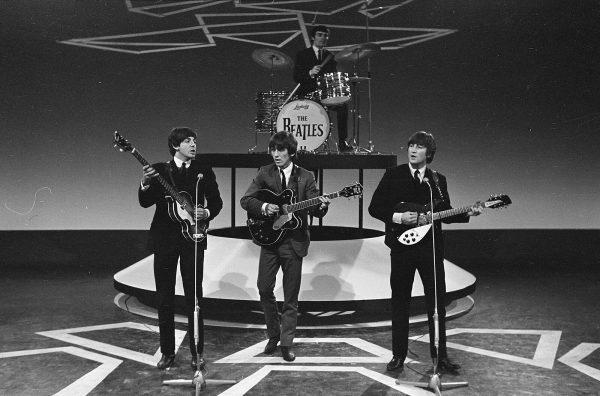
Paul McCartney’s photographs taken over this year serve as a new documentation of the band’s rise to fame. While this progress is described by McCartney as a “staircase to the stars,” there is truly no preparation for “fans ripping off your clothes or taking scissors to your hair,” as described by McCartney in the book’s foreword.
The book is organized into six sections, one for each of the major cities that the Beatles found themselves in throughout 1964 (Liverpool, London, Paris, New York, Washington D.C., and Miami). The journey through time that the book provides gives a transformation in subject matter as the year progresses. The book begins with Paul’s photos in London and Liverpool, the Beatles’ home base. Even as the boys travel to Paris, the photos in Europe all show the smaller circle of the Beatles at the time, since their popularity was still growing.
When the boys finally arrive in the haven of America, the subject matter transforms. Paul begins to get distracted by the world surrounding the Beatles, rather than the Beatles themselves. All of the abstract attention the boys had received — as shown through their growing numbers and rising hits — physically collected in America, distracting Paul and the other boys. McCartney specifically references the moment the Beatles landed in New York: fans, paparazzi, and journalists lined the airport and seemed to stick to them for the rest of their trip. It seemed to give Paul the realization that this may be what the world is like for him from now on, and he enjoyed every bit of it.
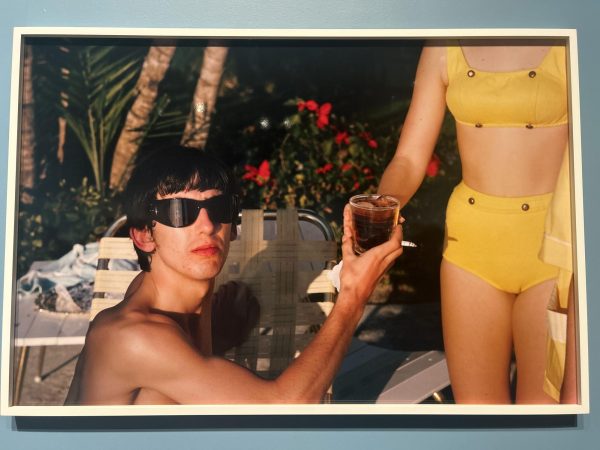
“You’ll see as our group made its way to D.C. and then to Miami that my camera was attracted to this new American universe,” writes McCartney in the book’s foreword.
When the Beatles first came to America, the country was in a state of national mourning. Following the death of John F. Kennedy and tensions from the civil rights movement and other social unrest, the Beatles had the ability — despite not being American — to ease this sense of national tension. “It’s that playfulness and wit that make them very human and appealing to so many people,” said Futter. “Especially in the world we live in, which has so many dark problems, everyone wants to relax and have fun.”
Catherine Futter, Director of Curatorial Affairs and Senior Curator of Decorative Arts at the Brooklyn Museum, who organized the museum’s upcoming Eyes of the Storm exhibition said, “You’re seeing them go from being nationally known to being international through superstars. There’s the personal journey, and then there’s literally the physical journey of moving through space and time.”
Paul himself was an amateur photographer when the photos were taken. Because of this, the book provides an additional visual progression of his own journey with the camera. As the boys arrive in Miami — their final stop of the year and final section of the book — Paul learns how to take photos in color. It is clear that Paul has gained a better understanding of how to take a “good picture,” and there is an added layer of the progression the photos provide over the year – as viewers also see Paul’s individual growth in this hobby.
The photo collection itself can unofficially be divided into “quiet” and “not-so-quiet” moments. There is both a sense of serenity and severity that embeds itself in the collection, all of the photos encompassing a personal perspective lacking in many Beatles photos previously published. Paul’s photos largely represent people – whether it be fans, managers, and, of course, his bandmates. The subjects are caught in both moments of relaxation – fishing, chatting, or lounging by the pool – as well as moments of action for the band, such as escaping fanatic crowds. However, Paul also captures the excitement him and his bandmates felt at this newfound recognition. “You might think that all this was terrible, that it was painful, and that we felt like animals in a cage,” wrote McCartney. “but I did not feel this way… I felt like we were the stars at the center of a very exciting film.”
McCartney emphasizes this positivity in many of the writing segments dispersed throughout the book. His love for that year’s experience and his gratitude for the opportunity at this success is pure. However, one cannot help but feel a sense of unease at the constant attention directed towards these four young musicians – all novices to the exploitation of the industry – that is also captured in Paul’s photography. Even if this is a theme he doesn’t necessarily want to include, it is hard to avoid.
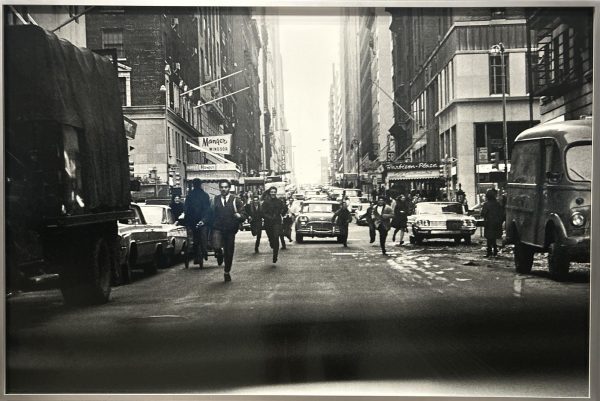
Certain action shots are especially jarring to look at. Paul captures darker moments for the band, whether it be crazed fans or invasive paparazzi. In particular, an unfocused photo portraying a panorama of paparazzi, all of whom have their faces covered by their camera, fills an entire two pages of the book. This dehumanized shot is one of the few without a caption – the message of the shot speaks for itself.
In spite of this, McCartney seems to have a goal of creating a collection similar to a family photo album. In his preface for the book, Nicholas Cullinan claims this goal has been accomplished through Paul’s photos “capturing the band members, their families and girlfriends, the managers, and the entourage.” It works, for the most part, except for when the people shown are not only obviously unfamiliar to the viewer, but to Paul himself. This obstructs the wholesome, heartfelt tone of the book – as it is almost unsettling how many fans and paparazzi the Beatles constantly found themselves in close proximity with – in dressing rooms, hotels, and enveloping them in the streets.
So no, I would not say that Eye of the Storm, as a whole, resembles a wholesome family album. But this doesn’t mean it isn’t wholeheartedly characteristic of Paul and his bandmates’ life at the time. At this point in history, as the world looks back on how one of, if not the most popular band rose to fame, no one wants a thwarted narrative on this story. Paul’s photos bring viewers the good, the bad, and the ugly, even if he himself doesn’t claim this is so.
But it would never be a Beatles book without the relationships between the boys themselves. Whatever remarks can be made about Eyes of the Storm, it cannot be said it is not intimate.
The Eyes of the 1964 storm are John, Paul, George, and Ringo.
We now know that George Harrison hated touring the most and flat-out refused to tour again after 1966, while John Lennon and Ringo Starr really didn’t like the road much either. As emphasized in his writing, Paul, however, had great love for the hectic life on the road. Despite the tension these discrepancies may have caused, the raw friendship that so clearly shines through in the photos is deeply poignant.
Along with thousands of readers in the past month, the collection of photos shines through even more in the various art museums around the world that have begun to showcase it since the book’s initial publication. Starting at the National Portrait Gallery, Eyes of the Storm has now been shown at major museums such as the Chrysler Museum, and is soon to open at New York City’s Brooklyn Museum in early May 2024.
While displaying a photo collection in a book versus an exhibition provides vastly different experiences for viewers, themes of intimacy remain prevalent, making it stand out amongst other works.
Futter said, “When you see the photographs taken by the press corps that was following them, you only get one side of the picture, but here you are getting a much more intimate view. You feel the exhaustion and you feel the excitement. When you see them being able to relax and unwind, you feel that personal journey they have had.”
The book, unsurprisingly, holds many portraits of each of the boys, whether it be deep in focus rehearsing, sitting on a plane, or lounging by the pool. Pictures like these are also present of other members of the band’s team, such as road manager Neil Aspinall or roadie/friend Mal Evans. What differentiates the images of George, Ringo, and John are Paul’s captions for them.
Through the captions, McCartney attaches to practically any image of one of his bandmates, the extent to which he knew and felt comfortable with them is abundantly clear. They were goofy with each other, as shown through McCartney’s caption accompanying a photograph of Ringo sticking a fork in his open mouth (page 61), saying “All I had asked him to do was ‘act naturally’” and an image of John with sunglasses on during rehearsal – “John looking very cool during rehearsals for The Beatles Christmas Show.”
Jennie Tang, Executive Assistant to Futter and co-organizer of the Brooklyn Museum soon-to-open exhibit, knew little about the band before she began working on the project. Beyond recognizing them as global icons – as many do – working closely with McCartney’s work gave her the chance to see them as much more: playful boys. To Tang, the theme of intimacy in Eyes of the Storm goes hand in hand with the playfulness between John, Paul, George, and Ringo. “These are just four guys. They might be swimming; they might be goofing off backstage. There’s a lot of moments that are just so fun, and they give this relatability that is very humanizing.”
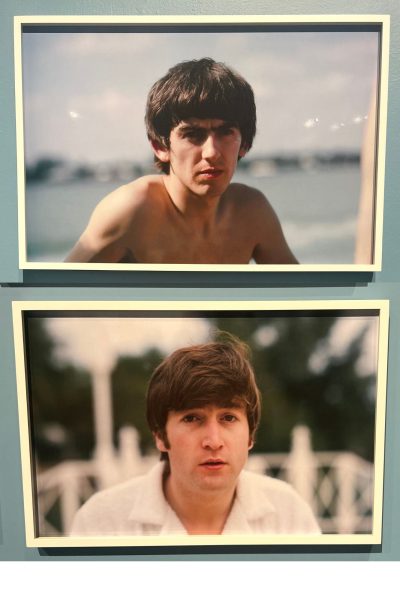
And they really did love each other. Despite all the turmoil that the band saw in the following decades, their fondness for each other was real since the start and it has remained until the end. Eyes of the Storm, in a bittersweet sense, represents this final chapter of the lasting relationship and enduring emotions of the Beatles. It is the core feelings of the four boys – what really matters in the end, when it all comes down to it.
As a testament to this, in one of the final pages of the book, Paul places two poolside portraits – one of John looking into the camera and one of George looking beyond it, determinedly focused on something in the distance catching his eye – with the collective caption, “I love and miss them both dearly.”
“When you see the photographs taken by the press corps that was following them, you only get one side of the picture, but here you are getting a much more intimate view. You feel the exhaustion and you feel the excitement. When you see them being able to relax and unwind, you feel that personal journey they have had,” said Catherine Futter, Director of Curatorial Affairs and Senior Curator of Decorative Arts at the Brooklyn Museum, who organized the museum’s upcoming Eyes of the Storm exhibition.

